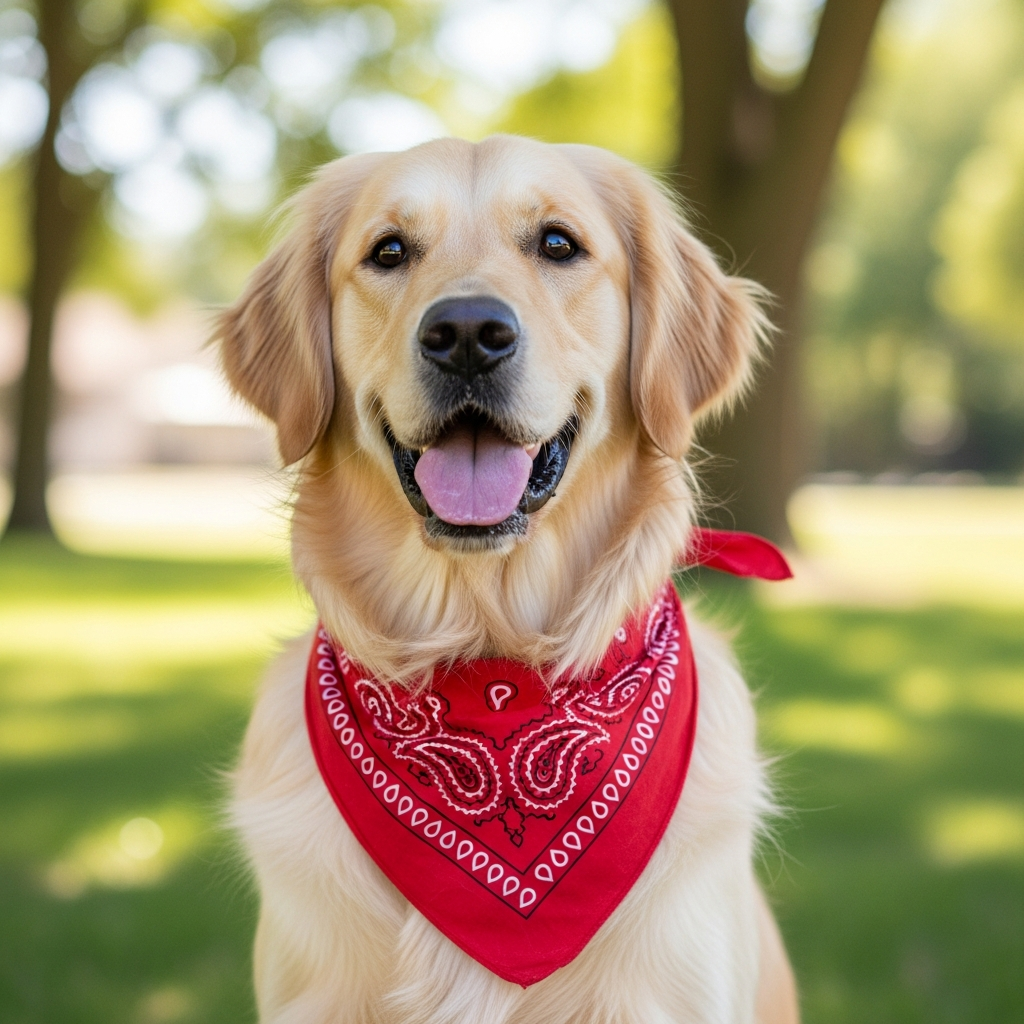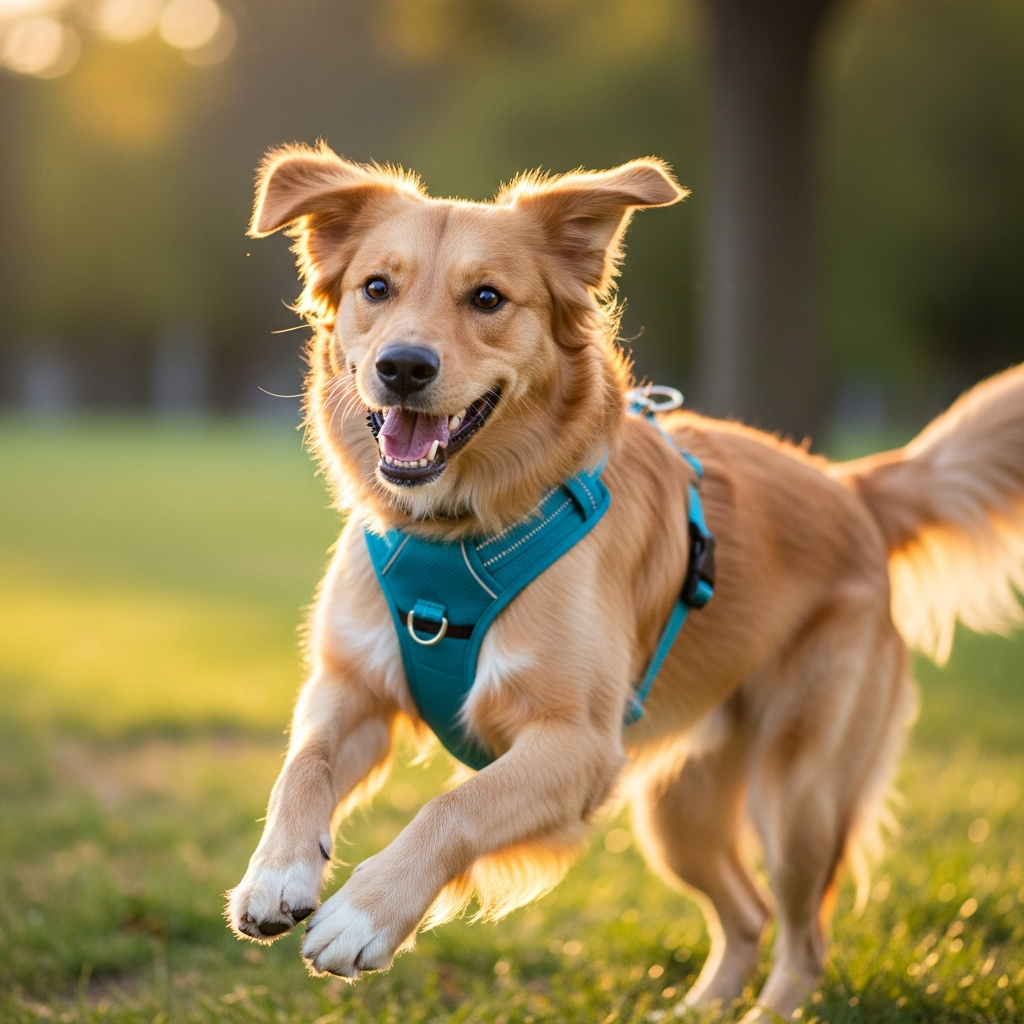You heard an Easy Walk harness could finally stop your dog from pulling. But now you're seeing concerns online about it being harmful. You're left confused and worried about doing the right thing.
Easy Walk harnesses are not inherently bad, but their safety depends entirely on correct fitting and use. They are effective training tools, but a poor fit can restrict natural shoulder movement. They are best used for short training walks, not all-day wear.

The debate around Easy Walk harnesses is something I encounter a lot in my work designing pet gear. On one hand, they are incredibly popular because, for many owners, they work instantly to reduce pulling. On the other hand, canine professionals have raised valid concerns about their mechanical effect on a dog's body. The truth isn't black and white. It’s not about the tool being "good" or "bad"—it’s about understanding exactly how it works and where things can go wrong. Let's break down the design, the risks, and the right way to use it, so you can make an informed choice for your dog.
How does an easy walk harness actually work?
You see it stop your dog's pulling, but do you understand the mechanics behind it? The design is clever, but knowing how it functions is key to using it correctly.
The Easy Walk harness has a front leash attachment and a "martingale" loop on the chest strap. When the dog pulls, the chest strap gently tightens across the chest, which redirects their forward momentum and turns them back towards you, discouraging pulling.

When I'm designing a no-pull harness, the goal is always to disrupt the "opposition reflex." This is a dog's natural instinct to pull against pressure. A standard back-clip harness places the pressure point right on their back, which is the strongest part of a dog's body, essentially giving them a green light to pull you forward. The Easy Walk harness cleverly moves that pressure point to the front. The key feature is the martingale loop on the chest. Unlike a simple D-ring, this loop provides a self-correcting tightening action. When your dog pulls, the strap cinches slightly. This creates an undeniable but gentle signal that pulling forward isn't working. It makes pulling feel awkward, so the dog learns that sticking by your side is more comfortable.
Deconstructing the Design
The effectiveness comes from a combination of two actions: redirection and pressure. The front leash attachment handles the redirection, steering your dog sideways. The martingale loop provides the pressure signal.
A Closer Look at the Mechanics
This is how I explain the core components to my design clients.
| Feature | Function | Effect on Dog |
|---|---|---|
| Front Leash Attachment | Serves as the steering point. | When the dog pulls, their body is turned back toward you. |
| Martingale Chest Loop | Tightens with pressure, then stops. | Applies a gentle, corrective squeeze across the chest muscles. |
| Horizontal Chest Strap | The point of contact for pressure. | Discourages forward lunging by making it physically awkward. |
It's a simple, effective piece of engineering. However, the placement of that horizontal chest strap is also the source of all the controversy.
What are the main concerns about the easy walk harness?
You've probably seen scary posts about gait restriction and shoulder damage from these harnesses. This makes you wonder if the solution to pulling is worse than the problem itself.
The primary concern is that an improperly fitted Easy Walk harness can restrict a dog's natural shoulder movement. If the horizontal chest strap sags down onto the points of the shoulders, it can affect their gait and potentially cause strain over time.

This is the most critical issue, and it's one I take very seriously in my own designs. A dog's front assembly, especially the shoulders, needs to move freely. When a dog walks or runs, their forelegs extend forward and flex back. A strap that cuts horizontally across the front of the shoulders can act like a band, physically limiting how far forward a dog can reach with its legs. Imagine trying to run with a tight band around your biceps—it would change your arm swing completely. Over time, this altered movement could lead to repetitive stress on the muscles and joints. This is why most modern, ergonomic harnesses, including many I've designed, use a "Y-shape" in the front. A Y-shaped harness has straps that go around the neck and then meet at the sternum, leaving the shoulder points completely free.
Risk vs. Reality
While the risk is real, it's almost always a result of poor fitting. The Easy Walk is designed for the chest strap to sit high on the dog's breastbone (sternum), well above the shoulder joints. When it's fitted this way, the risk of gait interference is significantly lower.
Potential Risks and Solutions
Here’s a breakdown of the common worries.
| Risk | Caused By | How to Mitigate |
|---|---|---|
| Gait Restriction | Chest strap sitting too low, directly on the shoulders. | Ensure a high, snug fit above the shoulder points. |
| Chafing/Sores | Constant rubbing, especially in the "armpits." | Check the fit with the "two-finger rule." Do not leave on 24/7. |
| Aversive Sensation | The tightening feeling can be unpleasant for some dogs. | Use it as a training tool, not a restraint. Pair with positive reinforcement. |
The takeaway is that fit is everything. A poorly fitted Easy Walk is a problem. A correctly fitted one is a very different story.
How can you use an easy walk harness safely?
You want the pulling control without the potential for harm. Is there a safe way to use this harness? You just need clear instructions to get it right.
To use an Easy Walk harness safely, focus relentlessly on the fit. The chest strap must sit high on the breastbone, not on the shoulder points. Use it only for on-leash walks and as a training tool to teach loose-leash walking, not as a permanent solution.

When I advise brands on customer education, I tell them to be obsessed with teaching proper fitting. With the Easy Walk harness, this is non-negotiable. It's not a set-it-and-forget-it piece of gear. The goal should be to use the harness to teach your dog that walking beside you is rewarding. Use it for your training sessions, but consider a different harness, like a Y-shaped one, for long hikes or running where a full range of motion is even more critical. Ultimately, the harness is a communication tool. It helps you say, "Hey, pulling doesn't work, but walking here by my side is great." Once your dog understands that, you may not even need the no-pull function anymore. That's the real sign of success.
The Safe-Fit Checklist
Treat fitting this harness like a technical task.
- High on the Chest: The horizontal chest strap should rest on the sternum (breastbone). It should be high enough that it cannot slip down over the points of the shoulders when the dog moves.
- Snug Girth: The strap that goes around their body just behind the front legs should be snug. You should be able to fit two fingers underneath it, but no more.
- T-Shape Formation: The shoulder strap and the girth strap should form a "T" shape on the dog's back, with the chest strap creating a vertical line down the front. If it looks like a saggy "X," it's too loose.
If you cannot achieve a fit where the chest strap stays off the shoulders, this harness is not the right choice for your dog's body shape.
Conclusion
The Easy Walk harness isn't inherently bad; it's a specialized tool. Its safety hinges on a perfect fit and its use as a temporary training aid, not a permanent leash restraint.
Cindy Long is the Sales Manager of Raysunpets and a pet lover with over 12 years of experience in exporting pet products. She specializes in providing customized dog chest carriers, leashes and pet accessory solutions for the European and American markets, always focusing on the real needs of customers and pets, and is committed to creating high-quality, practical and comfortable products that allow fur kids to live happier lives.


